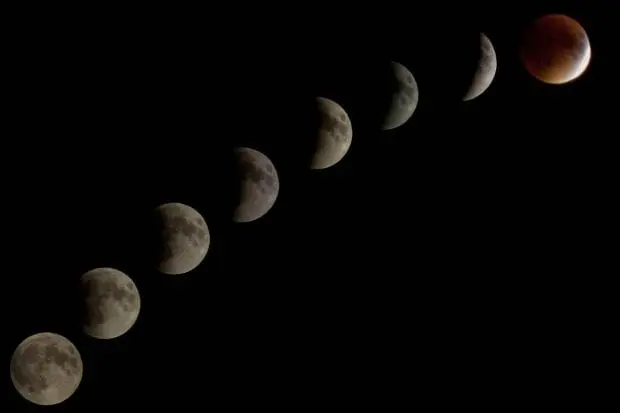Series Overview
The complete title of this article series is: ‘What is NOTHING? – Texture, Temperature, & Time’. In this series we examine each of these three principles as they relate to the concept of absolute nothingness in three (3) separate articles. Below is a brief description of the material covered in each article:
Part 1 – Texture: This article focused on common concepts of ‘nothingness’ and the true nature of the total absence of matter – including how that relates to our physical existence.
Part 2 – Temperature: This second article examined the relationship between energy and matter, and explained why whenever matter is present energy will exist.
Part 3 – Time: This final article will focus on the concept of time as a construct of our physical universe, and will explain why the passage of time is directly related to the existence of matter and energy.
Overview
While the previous two articles were of a more technical nature, this article will be of a more practical nature. In this article we will focus on the more commonplace aspects of time as it relates to the components of creation.
While we will touch on some of the technical aspects of time as it relates to three-dimensional space as a physical property in creation, we will not dwell at length on its technical side.
Common Usage
When we think of time we most commonly think of the measurement the passage of time. That is we often think of the usage of the timepiece. We may think of using a clock to tell the time of the day. We may think of using a watch to make sure that we’re not late for an appointment.
We also may think of time in terms of scheduling. For instance you may think about setting a time to meet someone for a particular activity or about scheduling a doctor’s appointment. We also may think in more general terms such as a class schedule, or a schedule of a business seminar.
While all of these are common applications of time in our lives there are so many other applications of time that take place of which we are often unaware.
‘Time’ and ‘Change’ – An Indivisible Union
Whenever anything in our physical world undergoes any kind of change it does so through a period of time. This means that if we’re playing a game of catch with a friend that during one point in time the ball is in our hand and at a later point in time the ball is in our friend’s hand. The ball has changed position over a period of time.
Furthermore not only has the ball changed position between two points in time but it has continually changed position throughout a period in time. Likewise our bodies have also undergone many changes in position during that period in time. This is a process that we perceive as motion and the element of time is absolutely necessary for this to occur.
A common way in which we measure motion on a day-to-day basis is by measuring the velocity of an automobile. We use the units miles per hour or kilometers per hour to measure how fast a vehicle is moving. These units are derived from a basic physical relationship which is represented by a formula where velocity is equal to distance traveled divided by a unit of time.
Velocity = Distance/Time
Motion is not something that simply takes place in a few specific instances as mentioned above. Motion is occurring in our universe from the level of the tiniest subatomic particles to the largest celestial objects. Motion is constantly occurring and has been since the Creation of our universe.
The element of time is absolutely necessary in order for motion to occur.
The great physicist Albert Einstein spoke of the space-time continuum because he realized that our physical three-dimensional space and the concept of time were interwoven and could not exist separate from one another. His studies revealed that time was dependent upon three-dimensional space, and space was dependent upon time. He found that the two, rather than being mutually exclusive, are inexorably co-dependent upon one another.
This is a fancy way of saying that one cannot exist without the other. In fact we find that each one is necessary to define certain absolute properties about the other.
Time, Matter, and Energy
When we examine the formulas in physics that describe any kind of action or change in state at all, we find that every one of those formulas is dependent upon time. This includes changes in both matter and energy.
For example, the general formula that relates to the heat gain of an object reads as follows:
Q/Δt = -kAΔT/x;
Q = heat gained
Δt = time of heat transfer
k = thermal conductivity (a property of the heated object)
A = surface area in contact with differing temperatures
ΔT = change in temperature
x = thickness of material experiencing heat gain
Notice that in the above formula heat gained (Q) is directly related to change in temperature (ΔT). That is, as the object gains more heat, its temperature will increase proportionately (or as it is exposed to a higher temperature, it will gain more heat). This agrees with the basic definition of temperature (the right side of the formula is always negative in value because heat is always transferred from the hotter region to the cooler one – thus heat gain for the object being heated results in a corresponding heat loss for the heat source).
The element of time is clearly seen in the left-hand side of the formula which reads:
Q/Δt (heat per unit time)
The common units for Q/Δt are BTUH (BTU/hr.) and demonstrate that, like the measurement of velocity, the transfer of heat (and therefore change in temperature) is measured as a rate (happening over a period of time).
This shows us that the process of heat gain/loss (and therefore the process of temperature change) is dependent upon time.
A real-world example of this process is seen when we cook a meal in an oven. If we are baking a turkey, the bird enters a hot oven cold and raw. After a specified amount of time (based upon it’s overall size and thickness), the turkey turns a nice golden brown and the meat inside turns from pink to white and brown. This does not happen in an ‘instant’; but, it takes a specific period of time to occur.
Time is always a factor when heat transfer results in the change of the temperature or state of a substance.
This same principle applies to a change in state of a material (i.e. a change from solid to liquid, or liquid to gas). The difference is that each material has properties known as heat of fusion (hf) and heat of vaporization (hv). These are values that are used to calculate how much energy is required to change the state of a substance from a solid to a liquid or from a liquid to a gas respectively without any resulting change in temperature.
We apply this principle every time we drop ice cubes into a glass to keep a drink cold. As the ice cubes warm up to the freezing point of water they begin to melt; but, they remain at 32°F until they are completely melted. This keeps the entire drink in the glass cold for a time, even when the temperature surrounding the glass becomes quite warm. As we all know, it takes time for the ice cubes to melt completely – and that time depends on a number of factors including: how large & how many ice cubes we use, how warm or cold the liquid is, how cold the ice cubes were originally frozen, how hot the surrounding temperature is, how well the glass/cup is insulated, etc.
Nonetheless, time is always a factor when heat transfer results in the change of state of a substance.
Time and Creation
Throughout this article series we have seen how texture (matter), temperature, and time are all interrelated and interdependent. Furthermore, we have seen how none of these three can exist without the others. This brings us to the importance of the very Creation account recorded in Scripture.
The very first verse in the Bible tells us that it was the Lord God Himself who created time (“In the beginning”), space (“God created the heaven[s]”), and matter (“and the earth”). We also learn in 1 Peter 3:10-12 that one day the Lord will cause the heavens to ‘pass away’ and the elements (literally the very ‘rudiments’ of Creation) to ‘melt with fervent heat’.
Texture, temperature, and time all came into being at the moment of Creation.
In the above passage from 1 Peter the fact that a ‘fervent heat’ (intense temperature) is necessary to ‘melt’ (literally ‘break apart’) the ‘elements’ of creation demonstrates that a tremendous amount of energy (intense temperature) was required in the formation of the same elements.
Therefore, we see that texture, temperature, and time all came into being at the moment of Creation.
Summary
The Lord God Almighty is Sovereign over all Creation; from how it was formed in the beginning to how it operates now to how it will be refashioned in the Eternity to come. Through all of this He has created one and only one planet ‘to be inhabited’ and that planet is our Earth (Isaiah 45:18). He also sent One and only One Savior in the Person of Christ Jesus to be the Propitiation for our sins (1 John 2:2; 4:10), because His Personal Desire is that each and every one of us comes to Him by faith (2 Peter 3:9).
In His Love,
Dr. Jack L. Burton
-Hebrews 11:1-3
References
(1) Engineering Toolbox – Conductive Heat Transfer
http://www.engineeringtoolbox.com/conductive-heat-transfer-d_428.html
(2) Engineering Toolbox – Latent Heat of Melting of some common Materials
http://www.engineeringtoolbox.com/latent-heat-melting-solids-d_96.html
Additional Reading
(1) Einstein Online – Elementary Einstein
http://www.einstein-online.info/elementary
Notes
- All Bible quotes in this article are taken from the KJV.
- Bible passages in double quotes (“) appear exactly as found in the KJV.
- Bible passages in single quotes (‘) have been modified for emphasis or ease of reading only (such as capitalization of pronouns referring to God, bolded text, or modernized punctuation, etc.) without altering the actual wording of the text.
Disclaimer: While to the author’s knowledge all of the information cited in the referenced material related directly to the content of this article is correct and accurate, the author in no way endorses any of the cited references in their entirety – especially where the material contained therein is in direct contradiction with the Creation account given in the Word of God.







